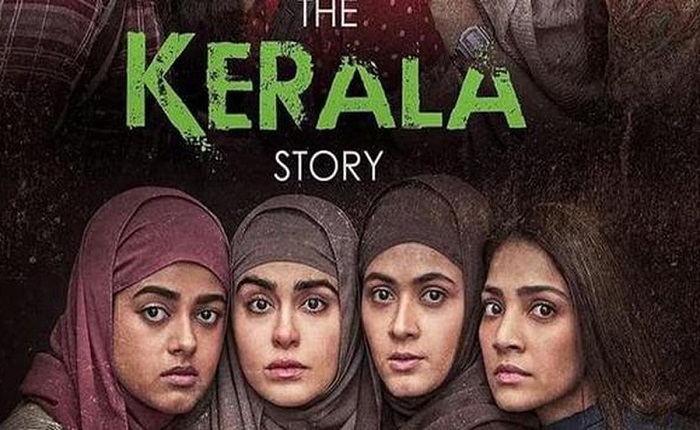The Kerala Story: A Tale of Resilience and Change

The Kerala Story is a phrase capturing the diverse and vibrant narrative surrounding Kerala, the southwestern Indian state known for its unique blend of events, cultural influences, and socio-economic progress. Famous for its beguiling landscapes, dynamic culture, and distinctive development models, the story of Kerala is a captivating study in endurance, development, and tradition. This blog covers several aspects of the movie “The Kerala Story,” including its historical influx, cultural amalgamation, the social reforms that took shape, and much more, providing a comprehensive understanding of this extraordinary state.
Historical Overview of Kerala
The Kerala Story opens with its ancient history, which was dominated by maritime trade with the Greeks, Romans and Arabs. Hailing from pepper and cardamom, Kerala is hardly new territory for global spice trade. The region is also known for ruling dynasties like the Cheras, which contributed significantly to the cultural life of the state.
For centuries, Kerala has been influenced by different foreigners — Portuguese, Dutch and British, each of them developing its own imprints in the Kerala cultural and economic life. These interactions have shaped a cosmopolitan culture unique to Kerala. His appreciation for the history is critical to understanding how its past has shaped present-day Kerala, by way of everything from its cuisine to architecture.
Creative Wealth and Varied Cultures
Cultural vibrancy underlies “The Kerala Story.” The state is known for traditional art forms like Kathakali and Mohiniyattam which are part of Kerala’s cultural ethos. Other performing arts such as these contribute brightly to Kerala’s cultural canvas and are major draws for touristic interest from near and far.
There were also the title and abstract for this section. With elaborate feasts, vibrant decorations and traditional games, these festivals are a testament to Kerala’s rich heritage and communal spirit.
It became a trend to identify the causes behind Keralas progressive social policies
That “The Kerala Story” is also in many ways a story of progressive social policies. The model of Kerala is rich with examples of high human development index indicators despite relatively low growth in GDP. The state has one of the highest literacy rates in India, along with goodheath care services, which experts attribute to a focus on education and public health.
Kerala has been the first state in India to achieve 100% literacy rate and this has become a strong foundation in its social and economic progress. The state also stands out for its focus on female education and empowerment, which has led to remarkable gender parity.
Kerala’s Political Landscape
What makes “The Kerala Story” so politically charged is the situation in Kerala. The landscape is dominated alternately by the Communist Party of India (Marxist) and the Indian National Congress. Resulting in a slew of pro-poor government policies to address poverty, education and healthcare.
Kerala’s people are more politically engaged than elsewhere and passionate public debate about government and policy is common. Such active political engagement is a vital thread in Kerala’s democratic tapestry.
Kerala’s Economic Model
Because of its geographical limitations and a lack of large scale industrial development, Kerala has sustained a stable economic model. In economic terms, “The Kerala Story” is a directorial exercise from the affluent state that is primarily sustained by the remittances of its huge expatriate community, along with contributions from tourism, to agriculture and the public sector.
Kerala Model: Kerala’s development strategy is centred on welfare and sustainability as opposed to GDP per capita. This approach, which has gained national and international recognition, combines equity, welfare, and development in a distinctive manner.
Kerala Tourism: God’s Own Country
Tourism is a major chapter in “The Kerala Story,” since the state is promoted as “God’s Own Country.” This makes Kerala one of the most sought-after tourist destinations in India, along with its green hills, tranquil backwaters, clear beaches, and rich traditions.
Tourism not only contributes to the economy of Kerala but also aids in its cultural and environmental preservation. The environmental and human-friendly tourist policies in Kerala is to make sure that no part of exploration in tourism is at cost to the state either in terms of natural resources or the cultural richness.
Role of Kerala in Indian Cinema
“The Kerala Story” incidentally spills into the world of Indian cinema, where the Malayalam industry has found its own non-fictitious brand of storytelling. Well known for their realistic and societal based contents, Malayalam movies are considered one of the under rated gems in the Indian film industry.
Not only have the streams of creative output made Kerala into a market of artistic excellence with tastes distinct to its culture, but filmmakers like Adoor Gopalakrishanan and Shaji N. Karun have found worldwide acclaim for the stories they tell, which inarguably are imbued with the narratives of social, political, and cultural lives of the land. The global recognition of these films highlights the state’s outstanding contribution to the arts.
Education System in Kerala
And education is fundamental to The Kerala Story. The high literacy rate and availability of education in the state make it a role model for many parts of the world. This focus on education is at the core of his generals becoming empowered and that used to fuel generations to come, with far-reaching social and economic advantages.
Indeed, the educational institutions in Kerala — be it a primary school or university — are engaged with holistic development of students preparing them with skills that are vital in installing 21st century skills. The state’s focus on education alongside progressive initiatives in digital learning and inclusive teaching.
Environmental Initiatives at Kerala
Karnataka based “The Kerala Story” is also one of the significant aspects of environmental conservation. From the Western Ghats to its extensive coastal lines, the state works on policies of sustainable development and conservation as it boasts a rich ecosystem.
The Haritha Keralam Mission, which focuses on expanding green cover, waste management, and water conservation, is another initiative that showcases Kerala’s dedication to environmental sustainability. Efforts like these are critical for maintaining Kerala’s ecological balance and supporting its tourism industry.
Role of Women in Kerala
Women hold key positions in shaping “The Kerala Story.” The state also stands out for its high female literacy and significant female participation in the workforce. From politics to healthcare, women empowerment is observed in every aspect and are responsible for the state’s progressive social structure.
Kerala has consistently emerged as a model for women’s rights in India through the policies of the State government for their livelihood and the opportunity for women.
Today’s Challenges and How they Face Kerala
Against such celebrated achievements, “The Kerala Story” also details challenges in the form of economic disparities, environmental issues, and social change. Solutions to these issues will be critical to moving Kerala’s growth trajectory forward.
However, problems such as urbanization, climate change, and economic inequality will require new and innovative solutions to ensure that Kerala continues to flourish as it has done while still preserving its unique heritage and social fabric.
Global Discourses that are Influenced by Kerala
The Kerala model has a wider relevance, shaping discussions on public health, social development and basic education across the world. The state has international recognition for its successful handling of several health emergencies, including the Nipah virus outbreak and the COVID-19 crisis.
Kerala’s lessons on public health emergencies, sustainable development and social welfare will resonate with the global audience.
Conclusion
It is a multi-layered story of rich culture, progressive policies, and sustainable development. Despite its fair share of issues, Kerala continues to be an inspiration in terms of social welfare, environmental conservation, and education. The story of “The Kerala Story” is more than a story and more than a glimpse into the journey of that state; it echoes important themes about sustainability, social justice and the complex inter-dependence between the east and west today.
FAQs
What is special in “The Kerala Story”? Kerala, which is heavy on high human development indices, a culture of gentleness and progressive social policies, is unlike any other state.
How has tourism in Kerala been affected? The kick up of tourist activity has greatly enhanced the earnings of the state of Kerala and also assisted in the conservation of its natural and cultural heritage.
What is the “Kerala Model” of development? It alludes to Kerala’s model of focusing on health and education — human development indicators — rather than purely on an economic growth story.
How does Kerala keep its environment intact? Inclining towards environmental policies and effective conservation and sustainable development initiatives.
What is the role of women in Kerala society? Women are the axis of progress in Kerala and we find high literacy rates among women and their active participation in all sectors also leading Kerala’s social reform.
For more insights and updates on tech, feel free to explore our About Us page at About Us and reach out to us through our Contact Us page at Contact Us. Enjoy your tech journey responsibly!

